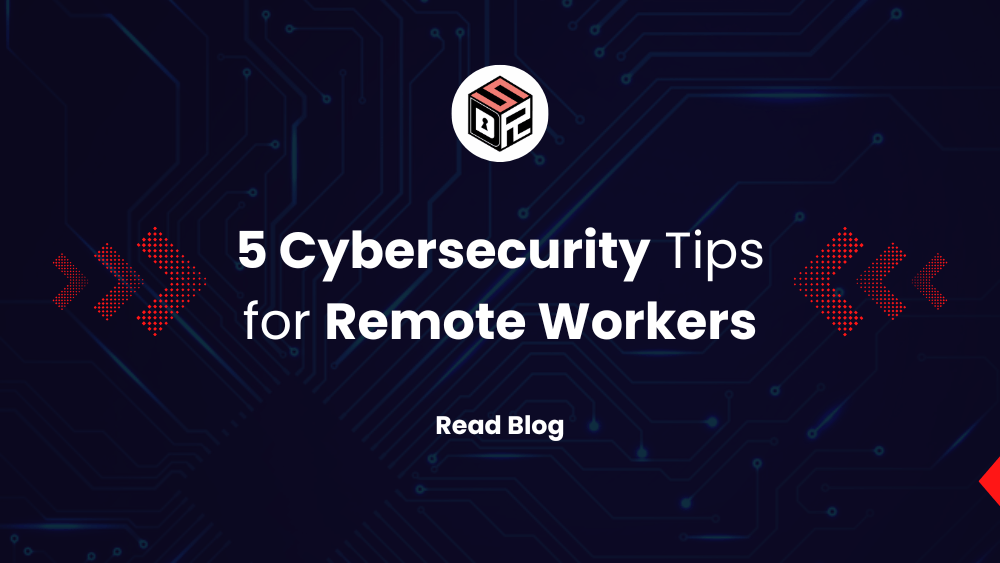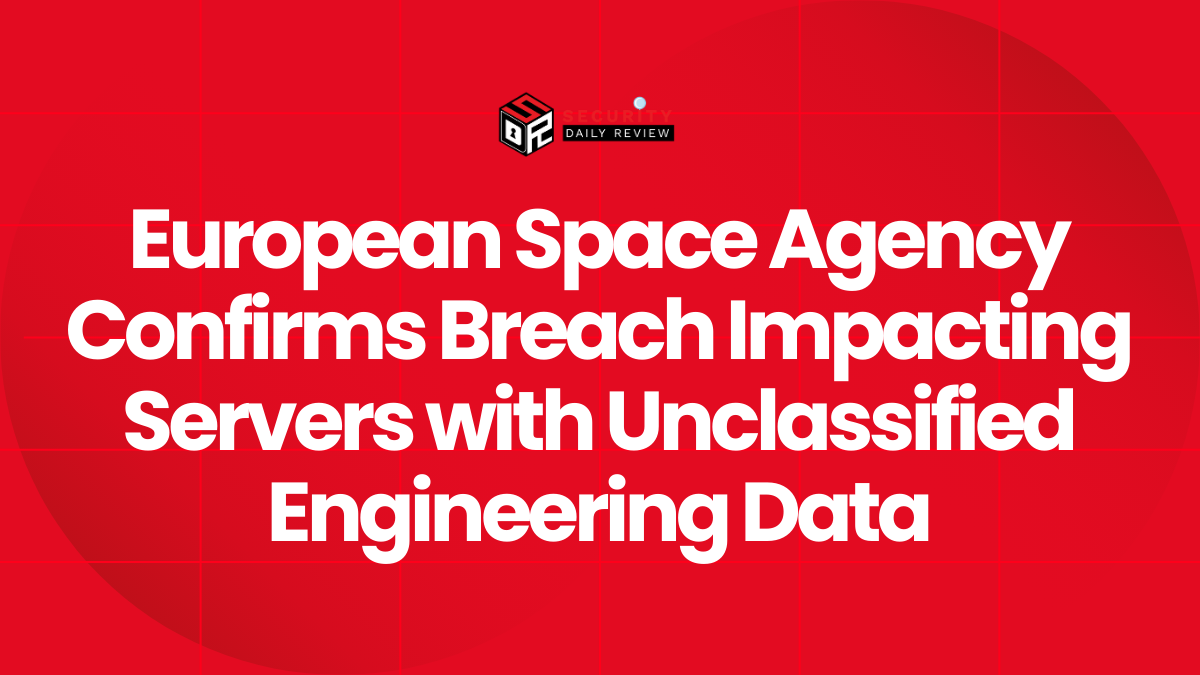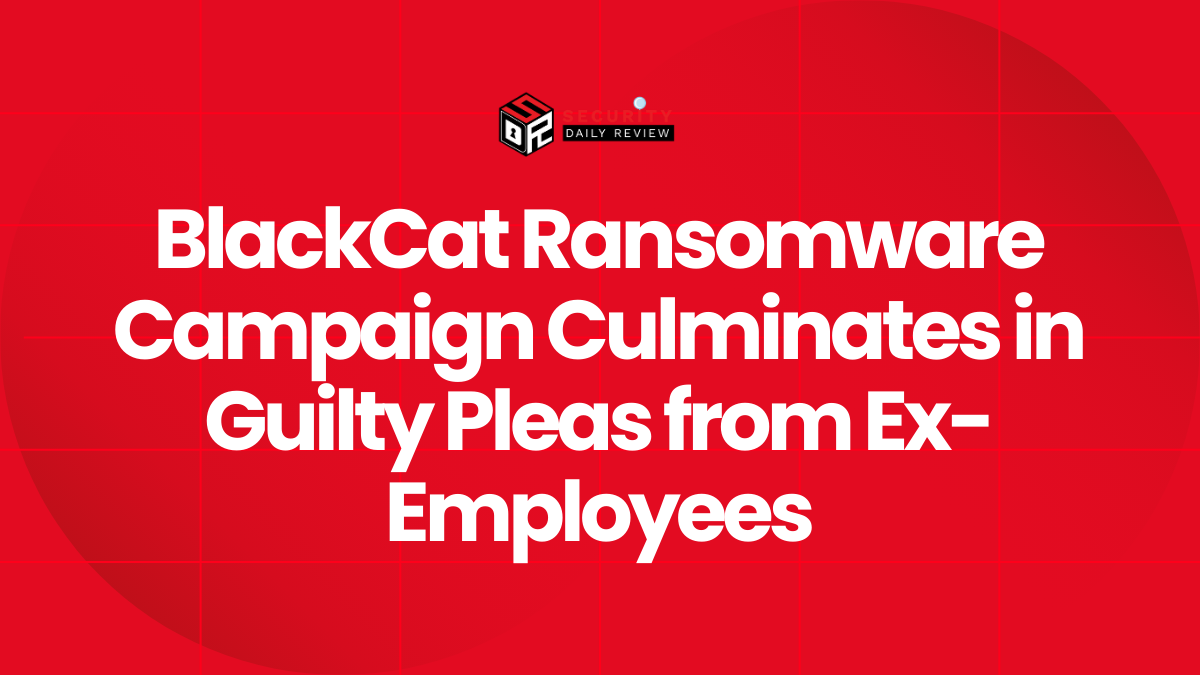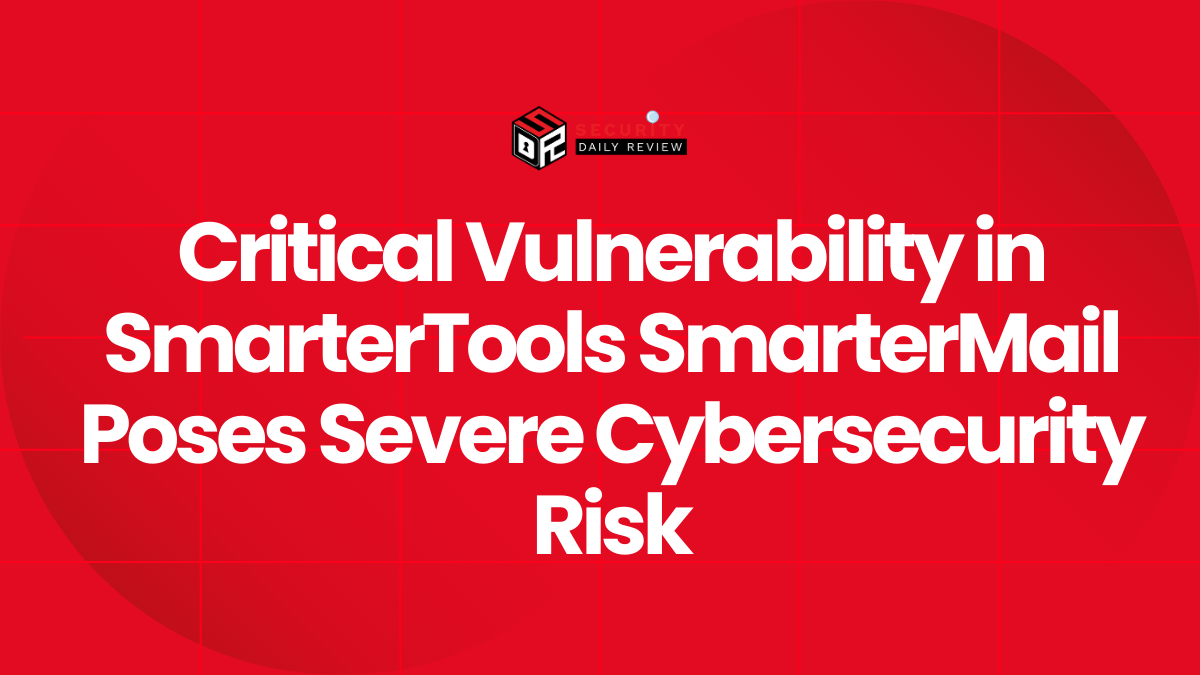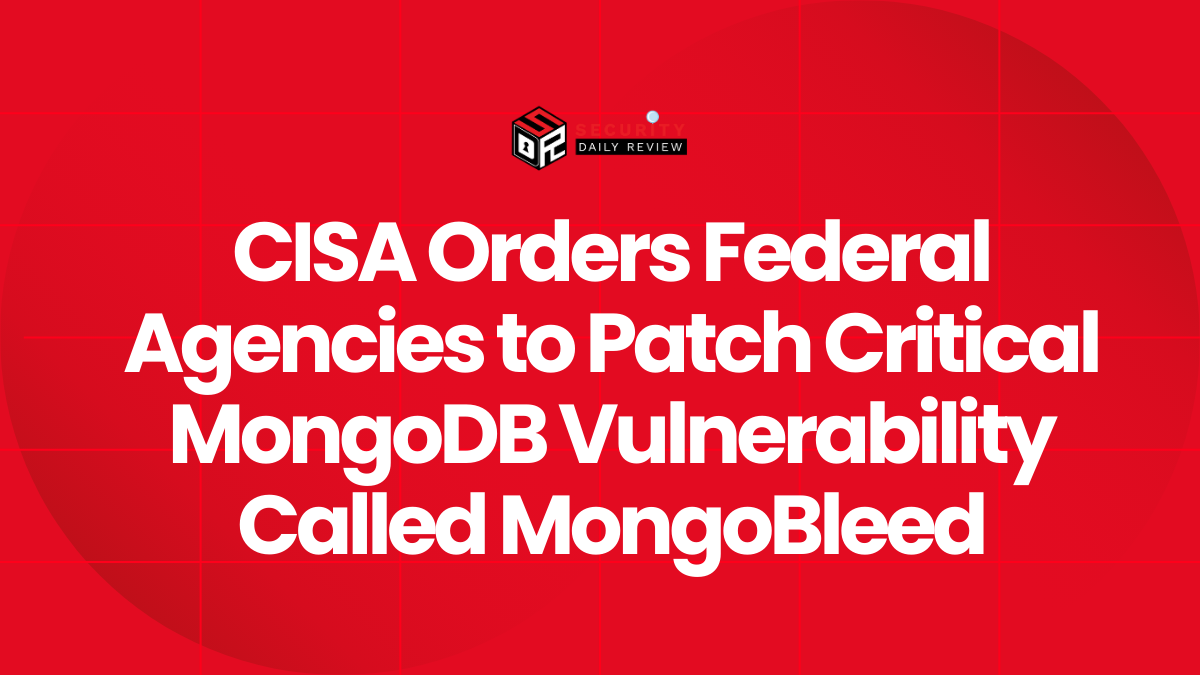The rise of remote work models has created a challenge for cybersecurity. Large companies with many remote employees now have a broader attack surface for cybercriminals. Traditional security measures may not be sufficient, especially as attackers use sophisticated social engineering tactics. Weak cybersecurity puts companies at risk of data breaches, ransomware attacks, intellectual property theft, and more.
This increased risk necessitates stricter security practices for both companies and their remote employees.
This blog explores five essential cybersecurity tips for remote workers that organizations can implement to protect their assets and address the increased vulnerability of dispersed endpoints. These tips can help prevent cyberattacks and ensure the success of enterprise remote work strategy.
5 Cybersecurity Tips to Secure Business Remote Workforce
1. Use Strong, Unique Passwords and Multi-Factor Authentication (MFA)
Passwords are often the first line of defense. However, not all passwords are created equal. For remote workers, especially those within large organizations, using strong, unique passwords is paramount. A strong password typically includes a mix of uppercase and lowercase letters, numbers, and special characters, and is at least 12 characters long. Avoid using easily guessable information such as birthdates, common words, or sequences like “1234.”
But strong passwords alone are not enough. Each account should have a unique password to prevent a single breach from compromising multiple accounts. For instance, if an attacker gains access to an employee’s email password, they should not be able to use the same password to access other services like internal databases or financial systems.
To further enhance security, Multi-Factor Authentication (MFA) should be enabled wherever possible. MFA adds an additional layer of protection by requiring users to provide two or more verification factors to gain access to a resource. This could include something they know (a password), something they have (a security token or mobile device), or something they are (biometric verification like a fingerprint or facial recognition).
Here’s a practical implementation of MFA in a corporate setting:
- Password Managers: Encourage employees to use password managers. These tools can generate and store strong, unique passwords for each account, reducing the risk of password fatigue and reuse.
- MFA Solutions: Implement MFA solutions such as Google Authenticator, Microsoft Authenticator, or hardware tokens like YubiKey. These tools can integrate seamlessly with most enterprise systems, adding a robust layer of security.
- Policy Enforcement: Make it mandatory for all remote employees to use MFA. Enforce policies that require regular password changes and prohibit the reuse of old passwords.
This two-pronged approach ensures that even if a password is compromised, an additional layer of security stands in the way of potential cyber threats.
2. Regularly Update Software and Systems
Keeping software and systems up-to-date is a critical component of a robust cybersecurity strategy, especially for remote workers. Cybercriminals constantly search for vulnerabilities in software that they can exploit to gain unauthorized access to systems, steal data, or cause other harm. Regularly updating software and systems ensures that these vulnerabilities are patched, significantly reducing the risk of cyberattacks.
Why Software Updates Matter
Software updates often include patches for security vulnerabilities that have been discovered since the last version was released. These vulnerabilities can range from minor issues to critical flaws that could allow an attacker to take control of a device. By regularly updating software, remote workers can ensure that they are protected against the latest threats.
Practical Steps for Ensuring Regular Updates
- Automatic Updates: Configure all devices to automatically install updates. This includes operating systems, antivirus software, web browsers, and any other applications used for work. Automatic updates minimize the risk of human error or forgetfulness, ensuring that devices are always running the latest versions.
- Centralized Management: For larger organizations, implementing a centralized management system can streamline the update process. Tools like Microsoft Endpoint Manager or Jamf for macOS devices allow IT administrators to push updates to all remote devices, ensuring consistency and compliance.
- Regular Audits: Conduct regular audits to ensure that all systems are up-to-date. This involves checking that automatic updates are enabled and functioning correctly and verifying that no devices are running outdated software.
- Patch Management Policies: Establish clear patch management policies that define how and when updates should be applied. This can include scheduling updates during non-peak hours to minimize disruption and setting deadlines for critical updates to ensure timely implementation.
- Employee Training: Educate employees about the importance of updates and how to check for them manually if needed. While automatic updates are ideal, employees should know how to update their software manually in case automatic updates fail or are delayed.
Addressing Common Concerns of Your Remote Workforce
Some employees might be concerned about updates disrupting their workflow or causing compatibility issues with other software. To address these concerns:
- Schedule Updates During Downtime: Plan updates for times when employees are less likely to be working, such as overnight or during weekends.
- Test Updates: Before rolling out updates organization-wide, test them on a small number of devices to ensure they do not cause unexpected issues.
- Provide Support: Offer support and resources to help employees resolve any issues that arise from updates quickly.
3. Utilize a Virtual Private Network (VPN) for Secure Communication
One of the most effective ways to secure the connection between remote employees and corporate resources is by utilizing a Virtual Private Network (VPN). A VPN creates a secure, encrypted tunnel for internet traffic, which helps protect sensitive data from being intercepted by malicious actors.
How VPNs Work
A VPN works by encrypting data before it leaves the user’s device. This encrypted data is then sent through a secure tunnel to a VPN server, which decrypts the data and forwards it to its intended destination. This process ensures that even if cybercriminals manage to intercept the data, they cannot read or misuse it.
Key components of a VPN include:
- Encryption: VPNs use advanced encryption protocols to protect data. Common encryption standards include AES-256, which is considered highly secure.
- Tunneling Protocols: These protocols determine how data is encapsulated and transmitted. Popular tunneling protocols include OpenVPN, IPSec, L2TP, and WireGuard. Each protocol has its own strengths in terms of security, speed, and compatibility.
- VPN Servers: These are the endpoints where encrypted traffic is decrypted and sent to its destination. The location and security of VPN servers play a crucial role in the overall security of the VPN service.
Benefits of Using a VPN
- Enhanced Security: By encrypting internet traffic, a VPN prevents hackers from intercepting sensitive information such as login credentials, financial data, and proprietary company information. This is especially important when employees use public Wi-Fi networks, which are often unsecured and vulnerable to attacks.
- Remote Access: VPNs allow remote employees to securely access company resources, such as internal websites, databases, and applications, as if they were connected to the corporate network. This seamless access ensures that remote work does not compromise productivity or security.
- Data Privacy: VPNs mask the user’s IP address, making it difficult for third parties to track online activities. This protects the privacy of employees and the confidentiality of corporate communications.
Implementing a VPN in a Large Organization
- Choosing the Right VPN Solution: Select a VPN provider that offers robust security features, high-speed connections, and reliable customer support. Consider factors such as the number of simultaneous connections allowed, the geographic distribution of VPN servers, and the provider’s privacy policy.
- Deployment and Configuration: Deploying a VPN across a large organization involves configuring VPN clients on all devices used for work. This can be done manually or using centralized management tools. Ensure that the VPN client supports the required tunneling protocols and encryption standards.
- Enforcing VPN Usage: Mandate the use of the VPN for all remote access to company resources. This can be enforced through network policies that block access to corporate services from non-VPN connections. Additionally, configure the VPN client to automatically connect whenever an internet connection is detected.
- Monitoring and Maintenance: Regularly monitor VPN usage and performance to identify and address any issues promptly. This includes ensuring that all software and firmware are up-to-date, conducting regular security audits, and monitoring for unusual activity that might indicate a security breach.
- User Training: Educate employees on the importance of using the VPN and how to connect to it. Provide clear instructions and troubleshooting resources to help users resolve common issues.
Technical Considerations of Implementing a VPN
- Bandwidth and Latency: VPNs can introduce additional latency and bandwidth overhead due to encryption and tunneling. Choose a VPN provider with high-speed servers and optimize network configurations to minimize performance impact.
- Scalability: Ensure that the VPN solution can scale to accommodate the growing number of remote employees. This includes evaluating the capacity of VPN servers and the provider’s ability to handle increased traffic.
- Compatibility: Verify that the VPN client is compatible with all operating systems and devices used by employees. This includes Windows, macOS, Linux, iOS, and Android devices.
4. Implement Secure Communication Tools
In the context of remote work, secure communication is paramount to protect sensitive information and maintain the integrity of business operations. Using encrypted communication platforms for all work-related communications is a critical step in safeguarding data from unauthorized access and cyber threats. Here’s an in-depth look at how to implement and utilize secure communication tools effectively.
Importance of Secure Communication
Secure communication ensures that data transmitted between parties cannot be intercepted or read by unauthorized entities. Encryption is the cornerstone of secure communication, as it converts data into a code that can only be deciphered by the intended recipient. This protection is crucial for emails, instant messages, and video calls, which often contain sensitive information such as business strategies, financial details, and personal data.
Key Components of Secure Communication Tools
- Encrypted Email Services:
- End-to-End Encryption (E2EE): Ensures that emails are encrypted on the sender’s device and only decrypted on the recipient’s device. Services like ProtonMail and Tutanota offer E2EE, making it impossible for intermediaries to access email content.
- Transport Layer Security (TLS): Provides encryption during the transmission of emails. Most modern email services support TLS, which protects emails from being intercepted while in transit.
- Digital Signatures: Use of digital signatures verifies the sender’s identity and ensures the integrity of the email content. Services like S/MIME (Secure/Multipurpose Internet Mail Extensions) and PGP (Pretty Good Privacy) support digital signatures.
Implementing Secure Communication Tools
- Evaluate and Select Tools:
- Security Features: Choose tools that offer strong encryption, secure authentication methods, and data protection policies.
- Compliance: Ensure the tools comply with industry regulations and standards, such as GDPR, HIPAA, and CCPA.
- Usability: Select tools that are user-friendly to ensure widespread adoption among employees.
- Deployment and Configuration:
- Centralized Management: Use centralized management tools to deploy and configure communication platforms across the organization. This ensures consistent security settings and simplifies updates.
- Integration: Integrate secure communication tools with existing IT infrastructure, such as single sign-on (SSO) systems, to streamline access and enhance security.
- Enforcing Secure Practices:
- Mandatory Use: Require all employees to use the designated secure communication tools for work-related communications. Block access to non-approved platforms to prevent data leakage.
- Regular Audits: Conduct regular security audits to ensure compliance with security policies and identify any vulnerabilities.
- Monitoring and Incident Response:
- Continuous Monitoring: Implement monitoring tools to detect and respond to any suspicious activities or security breaches promptly.
- Incident Response Plan: Develop and maintain an incident response plan to address any security incidents swiftly and effectively.
Backup Regularly and Leverage Air-Gapping and Immutability
Regularly backing up data, combined with advanced strategies like air-gapping and immutability, provides a robust defense against data loss due to cyberattacks, hardware failures, or human error.
Importance of Regular Backups
Regular backups ensure that, in the event of data loss or corruption, an organization can quickly restore its operations to a previous state. Key reasons for regular backups include:
- Data Recovery: Restore data in case of accidental deletion, hardware failure, or corruption.
- Ransomware Mitigation: In the event of a ransomware attack, having recent backups allows the organization to recover data without paying the ransom.
- Compliance: Many industries have regulations that require regular data backups to ensure data integrity and availability.
Implementing a Comprehensive Backup Strategy
- Identify Critical Data: Determine which data is essential for the organization’s operations. This includes customer information, financial records, intellectual property, and operational data.
- Backup Frequency: Establish a backup schedule that aligns with the organization’s data recovery objectives. Critical data might require daily backups, while less critical data could be backed up weekly.
- Backup Types:
- Full Backups: Capture all data and require the most storage space. Typically performed less frequently.
- Incremental Backups: Only back up data that has changed since the last backup. More storage-efficient and faster to perform.
- Differential Backups: Back up data that has changed since the last full backup. Balances the speed of incremental backups with the comprehensiveness of full backups.
Air-Gapping for Ransomware Protection and Enhanced Security
Air-gapping involves storing backup data in a system that is physically, and/or logically, isolated from the internet and the primary network. This method prevents cybercriminals from accessing or tampering with the backup data remotely. Key steps to implementing air-gapped backups include:
- Physical Isolation: Store backups on external drives or separate network storage that is not connected to the internet or the organization’s primary network.
- Offline Storage: Regularly transfer backups to offline storage media, such as external hard drives or tape drives, and store them in a secure, physically separate location.
- Manual Transfers: Use manual processes to transfer data to air-gapped systems. This can be done using secure, removable storage devices.
Leveraging Immutable Storage to Stop Malicious Encryption
Immutable storage solutions ensure that once data is written, it cannot be altered or deleted. This provides an additional layer of protection against data tampering and ransomware attacks. Key aspects of immutable storage include:
- Write-Once-Read-Many (WORM) Technology: Implement storage systems that use WORM technology to ensure data immutability. These systems are commonly used in financial services and healthcare to comply with regulatory requirements.
- Immutable Snapshots: Utilize storage solutions that support immutable snapshots. These snapshots capture the state of data at a specific point in time and cannot be modified once created.
- Cloud-Based Immutability: Many cloud service providers offer immutable storage options. For example, Amazon S3 Object Lock and Azure Immutable Blob Storage provide built-in immutability features that can be easily integrated into backup strategies.
Best Practices for Backup, Air-Gapping, and Immutability
- Automate Backup Processes: Use backup software to automate the backup process, ensuring that backups occur on schedule without relying on manual intervention.
- Regular Testing: Periodically test backups to ensure they can be restored successfully. This validates the integrity of the backup data and the effectiveness of the backup process.
- Encryption: Encrypt backup data both in transit and at rest to protect it from unauthorized access. Use strong encryption standards such as AES-256.
- Access Controls: Implement strict access controls to limit who can manage and restore backups. This reduces the risk of unauthorized modifications or deletions.
- Documentation and Policies: Maintain comprehensive documentation of backup procedures, schedules, and policies. Ensure that all relevant personnel are aware of and adhere to these policies.
- Retention Policies: Define retention policies to determine how long backups are kept. Balance the need for long-term data retention with storage capacity considerations.
Conclusion
Incorporating these five cybersecurity tips ensures that remote workforces remain secure and productive. By implementing strong passwords with multi-factor authentication, keeping software updated, using VPNs, employing secure communication tools, and leveraging regular backups with air-gapping and immutability, organizations can effectively safeguard their data and operations against cyber threats.

